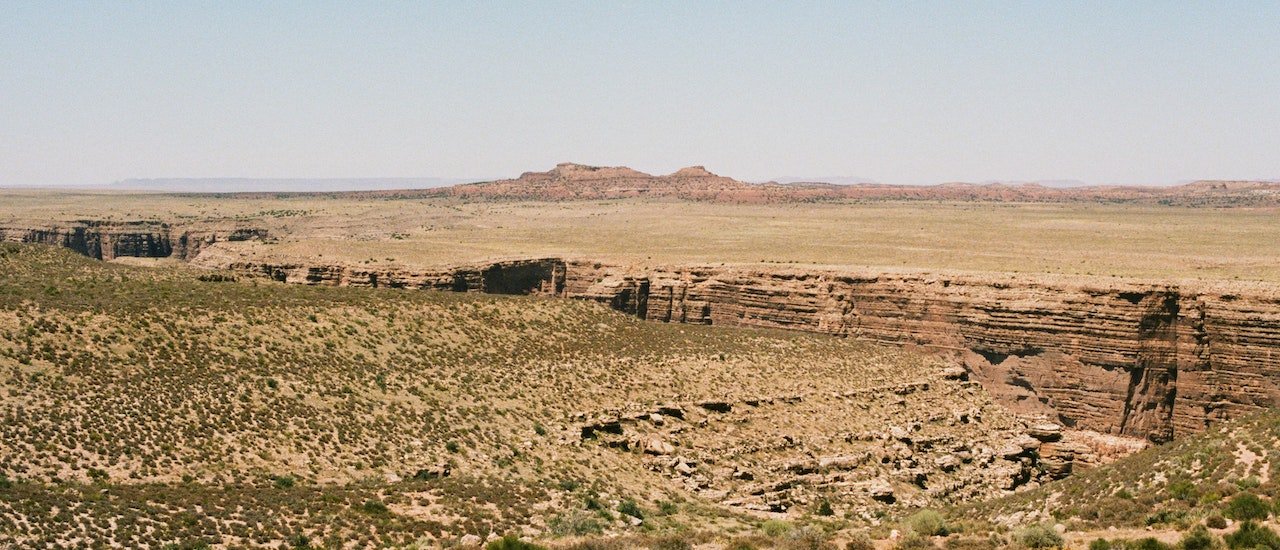This opinion piece was originally published in Arizona Central.
If anyone doubted the importance of the Internet before the COVID-19 pandemic, those doubts have vanished like toilet paper at Kroger. During this time, the Internet has proved to be a lifeline, delivering the latest coronavirus health and emergency updates, connecting people to coworkers and bosses, and facilitating online classes.
But this is only the case for those lucky enough to have access. The American Library Association says seven in 10 residents on rural tribal lands remain without access to fixed high-capacity broadband. Making matters worse, massive swaths of tribal land don’t even have a cellphone signal, much less a broadband Internet connection.
No Internet access means no access to the economic opportunities the Internet holds. In 2018 alone, the Internet sector accounted for $2.1 trillion of the U.S. economy. But during this pandemic, many residents of rural Indian Country don’t have the luxury of dreaming up online business plans.
They are instead fearful for their lives and the lives of their loved ones who lack access to solutions like telehealth or online counseling during this time of isolation.
A lack of access leaves us behind
The Internet was always important, but COVID-19 is illuminating the colossal crevasse between the connected and the unconnected, those in the life raft and those left in open water.
The Internet is critical for indigenous communities to leverage economic, health and educational opportunities. Today, connectivity is a necessary tool for tracking data and sounding the alarm for missing and murdered indigenous women, transmitting timely Amber Alerts, providing resources for physical and emotional healing, growing the number of indigenous language speakers, and cultivating a robust and diverse economy in some of the country’s poorest communities (financially speaking).
Yet indigenous communities remain among the least connected in North America.
The coronavirus is showing us why this is a problem. Students sent home from colleges and schools are encouraged to continue their studies online. But many native students return to homes without an Internet connection capable of playing videos and uploading assignments.
Many can’t work from home or sell goods online while waiting this out. These same tribal communities are also the last to receive important updates on health and emergency procedures, which are important for prevention.
Telehealth? Don’t even think about it.
FCC has dragged its feet on access
The Government Accountability Office (GAO) has repeatedly admonished the Federal Communications Commission (FCC) for making radio waves called spectrum (a natural resource) and other telecommunications necessities almost completely inaccessible to tribal nations. In 2018, the GAO said the FCC “has done little to promote and support tribes’ access to radio frequency spectrum that can be used for such wireless service.”
Now, amid this global pandemic, the reality of the situation looms, as connecting Indian Country can mean the difference between life and death. Connectivity is urgent and we need decision-makers to do more.
Anyone can point out the problems, but five months ago some of the brightest minds in Indian Country telecommunications came together to create solutions. They gathered in Pu’uhonua o Waimanalo, a small Native Hawaiian community in O’ahu where Internet connection was so bad, parents often took their children into town to use the Wi-Fi at McDonald’s to do research and submit homework assignments.
In the days that followed, experts assisted the Nation of Hawai’i to establish a sovereign community broadband network, with much higher speeds and lower rates than their former big telecom service-provider. A group of up-and-coming tribal leaders also deliberated over how to tell the FCC that native communities should be first on their list of priorities.
The group transformed their frustrations into policy recommendations.
Finally, we have access to spectrum
In line with those recommendations, on Feb. 3, the FCC opened a 180-day tribal priority window, extending an opportunity for native nations in tribal areas to apply for a license to a small slice of spectrum over their lands – a historic first. Holding these licenses will make it possible for tribal nations to set up their own community broadband networks or make it easier to contract established service providers.
Lately, telecommunications companies have taken steps to make the Internet more accessible to many, removing data caps, expanding public Wi-Fi access and offering free broadband to unconnected students. These are nice gestures that will help many, but the benefits will not necessarily extend to rural, tribal areas where data and backhaul infrastructure may not exist.
At best, they offer a temporary bridge across the widening digital divide.
A few weeks ago I traveled through Navajo Country to deliver telecom equipment and assist Navajo schools in setting up community networks. It was at the start of the COVID-19 outbreak in the United States.
If you’re wondering why my colleagues and I did not choose to self-isolate during this time, it’s because there was no choice. Because of COVID-19, policies suddenly changed. Tribal spectrum opened up and it was suddenly possible to bring these students and teachers online. They needed access to information more than ever.
This step forward could save lives
As I drove, I focused on not letting my bitterness consume me. It shouldn’t take a global emergency for tribal spectrum policies to change, and indigenous telecom workers like me shouldn’t be putting ourselves and others at risk. We will go wherever we are asked to go by tribal leaders, as safely as possible.
But policy changes leading up to this point could have prevented such risk, and made this time much safer and easier for thousands of tribal citizens. The FCC needs to act on tribal access every day, not just when the world is in a crisis.
Indigenous telecom experts have been making suggestions like these to the FCC for decades. Policy recommendations such as those made in Hawai’i are the beginning of a sustainable solution.
They call for consent and meaningful communication before the FCC takes actions affecting tribal nations. They indirectly ask the FCC and Congress to better understand how the government’s trust responsibility to native nations applies to connectivity. And most of all, they call for inclusive indigenous broadband and spectrum access.
This is urgent. The FCC’s implementation of these recommendations are an important step toward connecting Indian Country to services that will save time, money and stress.
But most importantly, it could save lives.
Image of Little Colorado River Navajo Tribal Park by Stéphane Paul via Unsplash

